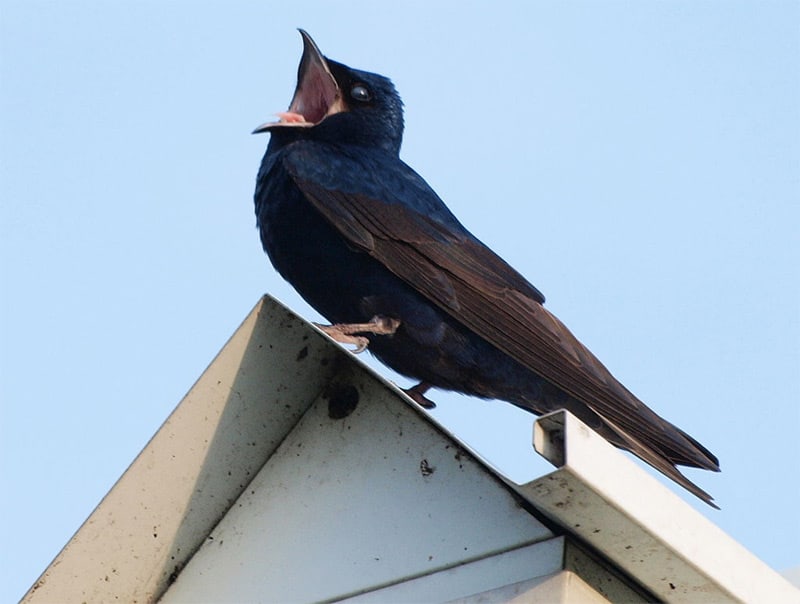Look for
Song is often an important clue in identifying the little gray and greenish flycatchers. In the South, the Acadian is the only one that nests outside of the Appalachians and the rolling Piedmont surrounding them. (Willow, least, and alder flycatchers provide ample identification challenges in these areas.) From spring into midsummer, the Acadian flycatcher belts out its distinctive and loud peet-ZUP! song, often from a partially hidden tree branch beneath the forest canopy. During migration, all five eastern Empidonax flycatchers may occur in one area. The Acadian and its Empidonax brethren (except willow) have bold or fairly bold, whitish eye rings. The Acadian has a greenish gray back and head, two bold white wing bars, and a mostly orange bill. It is mostly whitish underneath, with a faint olive wash on the breast.
Listen for
A high, sharp call that sounds like a squeeze toy: peet-ZUP! At dawn and dusk it also gives a longer, more elaborate song that is very sputtery and explosive.
Find it
Most Acadian flycatchers nest south of the Mason-Dixon Line. They are, along with eastern wood-pewees, eastern phoebes, and great crested flycatchers, the most common and frequently heard woodland flycatchers of the humid Southeast. Where widespread forest clearance occurs, however, their populations usually decline, with populations only remaining in larger, less disturbed woodlands. Humid bottomland woodlands with ample shady undergrowth of young trees provide the ideal habitat. These birds also nest in other deciduous forests with young trees under the canopy, and they winter in the tropics in woodlands as well. Nesting occurs primarily in the South, into east Texas and east to central Florida. These birds winter from Central America to northern South America.
Feeding Behavior
Most of the Acadian flycatcher’s varied insect prey is taken on the wing, either during quick flights from a regular perch or while hovering near leaves. Prey includes caterpillars, bees, wasps, beetles, and flies, but other small invertebrates (such as spiders) are eaten, as well.
Nesting Behavior
Acadian flycatchers often fasten their nests to forks of thin branches, usually well above head level. The female fashions the cup-shaped nest from twigs, plant stems, vines, grasses, and other materials, many of which raggedly hang from the nest bottom. Usually, the female lays three eggs, which she incubates for about two weeks. Both parents feed the nestlings, which leave the nest at about two weeks of age.
WOW!
Acadian flycatchers spend summers with wood thrushes and ovenbirds, then migrate across the Gulf of Mexico to spend the winter in tropical cloud forest with quetzals and bellbirds.




